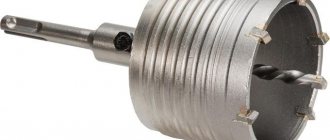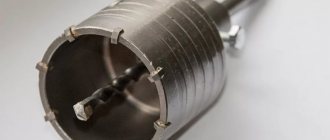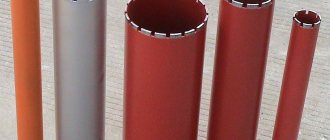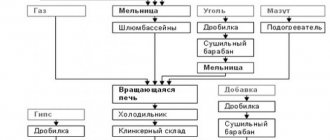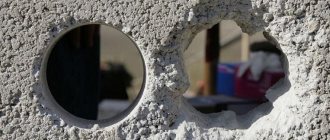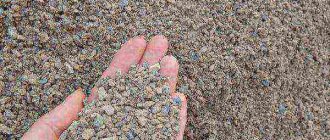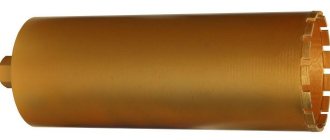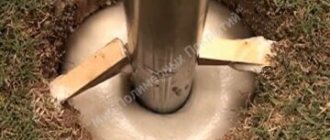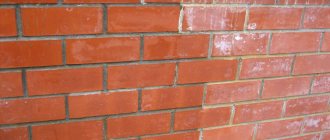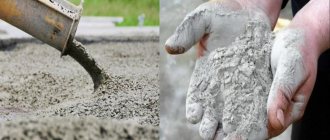Diamond bits for concrete are special attachments for drilling rigs or hammer drills, which are used for drilling grooves or holes in a variety of materials: concrete, asphalt, granite, and other hard coatings. Work can be performed at all stages of construction, repair and operation of facilities.
Diamond core bits for drilling concrete may differ in diameter, power, ability to install additional accessories (shanks, extensions, etc.), functions, working conditions and other criteria. There are universal elements, and there are those that are designed for specific tasks. Drilling concrete is important at different stages of repair and construction work when installing communications and wiring in walls, floors, ceilings; it may be needed for laying pipes and other elements.
Purpose
A diamond bit for concrete allows you to quickly and efficiently perform work that, without drilling with a hammer drill or using other processing methods, can take a lot of time and effort. Thanks to crowns, drilling of monolithic walls is carried out as efficiently as possible, taking into account the requirements and calculations.
Scope of application of diamond bits for concrete:
- Installation of a recess for a switch, socket, socket box
- Creating fasteners for a stair system
- Holes of different diameters and depths during the implementation of facade work
- Installation of boxes and various hanging structures
- Laying various communications through slabs - plumbing, electrical wiring, heating risers, ventilation and exhaust systems
Device Features
A diamond-coated concrete crown is a small piece of pipe made of durable tool steel, which can be made in different diameters and lengths. At one end of the cut there are strong and reliable cutting elements, while at the other there is a shank, thanks to which the cylinder is securely fastened in the tool chuck.
A diamond bit for concrete can be used with a hammer drill, impact and conventional drill, and other types of tools. The crown can be prefabricated/solid. In the center of the cut pipe there is a centering replacement drill (usually made with a carbide tip). Inside the cylinder there may be various sinuses that serve to collect waste from the working area.
Wet and dry cutting
A diamond bit for concrete can involve two types of drilling – wet and dry. In a wet cut, water is supplied during operation, which washes away the sludge and cools the product. This option is relevant where it is possible to ensure a continuous supply of water. Otherwise, it is better to choose drills for dry cutting or with a portable water container.
Wet cut
involves a constant supply of water during drilling, which has a positive effect on the tool, as it cools it and protects it from overheating. High-quality crowns for wet cutting are produced by Japanese manufacturers, and products from Russian and Austrian brands have also proven themselves well on the market.
Dry cut
requires attention to the placement of the support post, since even a slight displacement can cause the crowns to fail. In order for the tool to serve for a long time, it must be lubricated regularly. The highest quality crowns for dry cutting are supplied by American and German manufacturers.
Advantages of the crown device
Diamond bits for a concrete hammer drill have certain advantages, which are determined by the correct choice of element for a particular job, correct operation, and the quality of the product itself.
The main advantages of diamond drill bits for concrete:
- Durability - if you use it correctly and do not overheat the device, the crown will last for several years or more
- High performance – throughout the entire period of use
- Endurance - despite the fact that for a certain type of work a diamond bit for reinforced concrete is more relevant, even universal products perform well when working with reinforcement, although their service life is reduced
- Versatility – the ability to use crowns on electric, hand-held, home or professional tools from any manufacturer
- Different materials - diamond bits are often used to work with both concrete monolith and stone, expanded clay concrete, foam concrete, etc.
- Drilling holes of increased depth
- Excellent quality of work - thanks to drill bits, you can avoid cracks and chips, guaranteeing a neat and even hole (with a minimum of collateral vibration and noise, which is important)
- Small amount of dust during operation
- Absence of shock and vibration loads, therefore finishing of the structure can be carried out safely and effectively even in emergency conditions
Features of choosing diamond cylinders for concrete
Modern manufacturers offer diamond crowns in a wide variety. According to the principle of operation and design, they are all approximately the same - a small cylinder in the form of a pipe, at one end of which there is a cutting element, at the other - an attachment to a tool that works as a drive.
Typically, choosing a crown involves determining the type of shank and type of tool. Thus, manufacturers equip diamond drill bits with a cylindrical SDS shank. But it is worth considering that for a drill the device is made with a cylindrical or multifaceted shank. The cylinder for recesses for sockets can be equipped with either type of shank.
There are bits with universal shanks that can be used in a wide variety of tools. But manufacturers of electrical equipment and tools used in repair and construction work advise choosing crowns from the same companies as the tool itself. Logically, they must correspond exactly to each other and ensure the highest quality of work.
Criteria for choosing a diamond crown:
- Concrete hardness, presence of reinforcement.
- Wet or dry drilling.
- Diameter of holes (depends on the task at hand - thickness of the cable being laid, socket box, pipe cross-section, etc.). So, for drilling for a socket, it is better to choose a crown that is 2-3 millimeters larger so that the product is firmly attached to the gypsum mortar. Before purchasing a crown, you need to know exactly the diameter of the element for which the hole is being made.
- The type of tool, compatibility with a particular consumable, the power of the hammer drill - so, if a tool with a power of 1 kW is used in the work, it is not recommended to drill a hole larger than 25 centimeters. For more powerful hammer drills, nozzles of any diameter are suitable.
- Fixation of the teeth of the crowns on the shaft - the deeper the cutting teeth sit in the tube, the longer the service life of the crown will be.
- The design of the nozzle shank can be solid, with a different number of open/closed grooves (various modifications of the SDS fastening system, which are marked as top, plus, quick, max), for mounting in a cam-type drill chuck.
How to choose
The cost of these tools directly depends on their size. The larger the dimensions, the higher the cost. Therefore, even products for 200 rubles are a full-fledged tool, and not a cheap fake. The method of production of products is also very important. As practice shows, it is better to buy a drill made by the vacuum method.
When choosing a tool, you need to remember the thickness of the material and the diameter of the holes. To save money, it is better to make all holes the same diameter. Dry drilling of porcelain tiles is a very simple and convenient process, but drills with a cooler are much higher, so here you should choose economy or quality.
Return to content
Recommendations for use
In the process of performing any work using a diamond bit for concrete, you must follow the rules of electrical safety, safety precautions, and do not forget about special clothing and personal protective equipment, which will avoid injuries and various troubles.
Before you start making holes in the walls for dismantling work or implementing any other tasks, you need to make sure that the tool is in working order and the crown is attached correctly and securely. Before drilling begins, the area is marked and holes in the required quantity are made according to the marks. Periodically, you need to allow the cylinder to cool down so that it does not overheat, which significantly reduces its service life.
You should not skimp on the quality of crowns, as this will greatly affect the quality of the work performed. As a result, saving and using low-quality bits or ones not recommended by the tool manufacturer can lead to damage to the material being drilled, the bit itself, the perforator, and also cause injuries.
Drilling concrete
The beginning of drilling concrete with a non-diamond working body is identical: with the tool turned off, the tip is pressed against the hole mark and, turning the hand by the chuck, a hole is selected. Then the tool is withdrawn, turned on, slightly pressing the regulator, and drilling begins, gradually increasing the speed and feed.
The drilling design and desired use cases for each end-effector have already been described. Let us only note that reinforcement in reinforced concrete is the enemy of any drill. And it is also the fundamental connection of the supporting structure, damage to which is not necessary. Therefore, it is very better to have a special small metal detector in your toolbox - a rebar detector. This device is cheap, runs on batteries, and the pocket doesn’t weigh on you in terms of weight or money. It is very useful in work.
READ How to Cut Concrete with a Grinder Without Dust
The main thing when drilling concrete is the right choice of tool, working body, compliance with safety regulations, drilling modes and technology. Give it a try and you will be amazed at how drilling concrete can be cleaner and easier than you usually imagine.
Drilling efficiency
According to tool manufacturers and craftsmen, maximum work efficiency can be achieved using high-quality crowns and powerful tools made with a pneumatic or electric drive.
Basic conditions for work efficiency:
- Using a diamond bit for concrete to make holes for tasks such as laying various communications in reinforced concrete walls (plumbing, heating pipes, connecting units, electrical wiring, risers, ventilation, hoods, attachments, air conditioners, facade work).
- Diamond crowns must be used for their intended purpose, with precise selection of the required parameters.
- The cylinders must correspond to the tool in diameter, power, and be attached accurately and reliably. The size of the instrument and its correspondence to the crown also play a role. The marking usually includes all the necessary data (drill, hammer drill, M16 and other values).
- The master has certain skills and knowledge - at least minimal, in order to work correctly and in compliance with all standards and requirements. Small and medium-sized tubes can be used for DIY work; in other cases, it is better to leave the work to a master.
Drilling concrete walls: tools, technology, safety
Drilling concrete with your own hands is languid, noisy, dusty work and at the same time narrow and responsible. Why narrow? Firstly, due to the highest risk of injury. Secondly, drilling into building structures can reduce their strength and destroy communications in the walls, and this is material harm. Thirdly, the walls are often drilled right through, and if the tool is not good and/or it is used incorrectly, on that side something like the eruption of a small volcano occurs with flying fragments and the formation of a crater. And there are people, furniture, decorative trim. In other words, again there is a danger of injury and material damage. Therefore, it would be appropriate to start specifically with safety precautions.
Principles of working with a diamond cylinder for drilling concrete
To perform the assigned tasks with the highest quality, you must be able to work with tools and a diamond bit for concrete. There is nothing complicated in the work, but there are certain principles that must be adhered to.
Rules for working with diamond bits for concrete:
- Do not press too hard - this may impair the performance of the cylinder and reduce its service life, leading to breakdown.
- When working with reinforced concrete, it is better to use a dry cut and be sure to check the reliability and strength of the fixation. If the fixation is unreliable, the cylinder may become deformed and become damaged beyond repair.
- If diamond segments and edges are fixed with solder, then a water supply must be used during the work. If there is no cooling, the solder can noticeably weaken and even become deformed.
- The size of the installation must be correctly selected, match the assigned tasks, and guarantee the required level of efficiency and quality.
Review of prices for concrete drill bits, depending on type and size
Concrete crowns are sold in stores and retail chains that specialize in selling tools for various purposes and building materials. Their cost depends on the type of product, its size and the brand of the manufacturer.
There is a sales department for consumables in every store and retail chain that deals with hand tools and construction products.
The following table shows the price of various types of concrete crowns as of the third quarter of 2022, when sold through the retail network.
| Crown type | Brand | Cost (as of August 2022), rubles with outer diameter, mm | ||||
| 30 | 55 | 68 | 80 | 120 | ||
| Diamond | "Keos" | — | — | 2400 | 2900 | 4500 |
| "Bosch" | 1800 | 2700 | 3500 | 3900 | — | |
| "Enkor" | 1100 | 1400 | 1800 | 2200 | 2500 | |
| Carbide | "Keos" | — | — | 860 | 980 | 1550 |
| "Hagwert" | 580 | 650 | 860 | 1200 | 1400 | |
| "Enkor" | 375 | 500 | 550 | 650 | 800 | |
| Tungsten carbide | "Enkor" | 120 | 180 | 250 | 290 | — |
| "Bison" | 130 | 185 | 210 | 280 | 420 | |
Application of carbide bit
Carbide bits for concrete are used where impact drilling with a rotary hammer is required to the level of laying reinforcement. In this case, the cutting edge of the crown is made in the format of several teeth, and the opposite one is equipped with an SDS shank. Carbide bits are usually used where small holes need to be made (most often in everyday life, not in industry).
Due to the fact that the tool has a high impact force, the service life of the cylinder is significantly reduced, and the effect on the concrete structure is not very good. Carbide crowns, unlike diamond ones, cannot be restored.
Diamond hole cutting
- Before starting work, you need to make sure that there is no reinforcement in the concrete monolith that could damage the tool.
- If the mechanism has a centering drill, it is placed in the center of the mark on the drilling surface - now you can drill. If there is no drill, the cutting edge of the cylinder must be applied to the concrete surface with all teeth at the same time.
- Dust is removed using a construction vacuum cleaner equipped with a special hose attachment.
- You can drill continuously to the desired depth, without stopping.
- If you need to make a hole through, the drilled piece of concrete should remain inside the cylinder, then it is removed along with the nozzle. If the holes are not made through, the remaining piece of concrete in the center is removed with a chisel or chisel using the chipping method.
- To speed up drilling, you can deepen the tool a small amount, then take it out and make several holes in the contour of the circle to the required depth with a Pobedit drill with a diameter equal to the width of the cylinder teeth. Then drilling continues with the selected crown.
Necessary tool
The need to drill into load-bearing concrete walls arises regularly (for example, when repairing or installing electrical wiring, plumbing or furniture, such as shelves or an air conditioner), but this is not easy to do - such walls are much stronger.
A hammer drill is best suited for working with concrete. It is quite powerful and has a crushing function that breaks particularly strong pieces of the wall. The kit includes a set of drills of different diameters.
In some cases, you can use a simple drill to drill a hole in concrete. It is worth using if:
- You need to make some holes.
- The depth of the hole does not exceed 1.5 cm.
- You have to drill foam concrete - when using a hammer drill it crumbles.
In other words, a drill can be used if the amount of work is small and the holes themselves are small. But experts note that using a conventional drill will make drilling labor-intensive. Not just any drill will do - it must have an impact mode and pobedite bits.
Drill modes - drilling, drilling+impact, hammer drill Source rykinekruki.ru
You can also purchase a hammer drill - a more expensive but more powerful model.
The list of things to use to drill into a concrete wall also includes a screwdriver. But the model must be powerful enough and have durable attachments, and the concrete must be light.
Resuscitation and care rules, overheating protection
If a diamond bit for concrete has ceased to perform its functions normally, first of all, it is advisable to find out the causes of the malfunction.
First, the possibility of failure due to wear is established, then the body is inspected for cracks and the consequences of horizontal runout. If everything is in order, you can solder several segments to replace those that are worn out.
To extend the time between repairs and significantly increase service life, craftsmen recommend doing everything in strict accordance with the rules specified in the instructions. The crown is afraid of overheating and cannot be used to work with materials that are not listed in the technical data sheet. It is also important to ensure that the water cooling regime is not disturbed in wet models. Diamond bits for brazing concrete must be of high quality, made in accordance with standards.
Overheating protection is provided by the cooling system. When cutting wet, water flows in the required volume and continuously, cooling the diamonds. To operate the tool, the pressure in a regular water supply is sufficient. The required volume of water is determined based on the diameter of the crown head (all data must be indicated in the instructions). Exceeding the value may make it difficult to advance the tool; if there is little water, the segments are more likely to wear out.
How to avoid injury when working with a crown on a hammer drill
Regardless of what device is used, a regular household hammer drill or high-power units, safety rules must be followed and everything must be done to avoid injury.
How to work safely with a diamond bit:
- Before starting work, you must make sure that the crown is tightly and securely fixed, clamped with a fixing bolt (if the cylinder is collapsible).
- Carry out work in special clothing and safety glasses to avoid splinters of material getting into your eyes or body.
- Use a respirator to avoid breathing the dust that appears during the drilling process (you can also wet the area where the hole will be to reduce the amount of dust).
- For work gloves, choose rubber ones, since ordinary fabric or woolen ones can easily be damaged or wrapped around a rotating cartridge, which often leads to hand injuries.
Diamond bits for concrete are products that allow you to quickly, efficiently and efficiently make various holes in walls, ceilings, floors, and other concrete monoliths for laying communications, pipes, wires, installing ventilation systems, etc. Correct work with a high-quality tool guarantees a long service life and complete safety of operation of the tool.
Occupational safety and health
One fine moment an incident happened to the creator of these lines, which in general does not do him any credit, but is indicative:
I was drilling a wall in an ancient public building. There are a lot of holes, the brick is “merchant grade”, and besides, it gained strength over time, so it was necessary to push as hard as necessary. One more hole
- he applied the drill, leveled it, pressed it, grinned, turned it on... and the hammer drill and drill flew off through the wall, and the performer flew into it with his head up to his eyebrows and his hand up to his elbow. There was a gap there, sealed on both sides with plasterboard, plastered and covered with wallpaper.
Spectators, who had previously seen how difficult it was to drill a drill into a wall, watched with curiosity a scene that you won’t see in any action movie with kungfu stars, but the worker miraculously stayed at a height of 4.5 m, and the hammer drill hung inside on a cord, and the end The rotating drill ended up 15 cm from the head of a lady with a voluminous hairstyle. Another miracle happened - she was scared into a stupor, and her colleagues managed to drag her away.
2nd case from practice:
Drilled through plaster. Now I complied with the PTB and PPR (Work Performance Rules): before drilling, I carefully chipped the plaster down to the concrete. There was a thick dark cable there. Finding out what it was took two days. It turned out that there was a 380 V 50 kW input, indicated on the communications plan in a completely different place. The worker is a non-drinker, but upon learning what he had gotten into, he felt a burning desire to down a good glass of vodka in one gulp.
These cases are presented not for fun, but as an illustration of PTB and PPR. Without going through them in detail, let’s state the facts straight away:
- When drilling walls, provide yourself with personal protective equipment - work in a petal respirator, helmet, safety glasses and overalls. Silicosis is not only a disease of miners; dust from the walls is in no way more harmful than mine dust, and a piece of plaster from the ceiling hitting the head is not unique.
- Take people out of the work area (2.5 m across, considering the hole as the center when its height is up to 5 m) ON BOTH SIDE OF THE WALL. Install or extend fencing. If the wall is external, it is better to have someone watching outside to warn passers-by.
- Working at heights of 1.5 m or more without a strong, stable base underfoot is considered working at height. Working with a hammer drill at height is prohibited. Therefore, work from the goat or scaffolding; in the latter case - from a stepladder with stops, but its steps should be placed parallel to the wall; then the stability of the body “within the limits of decency” will be ensured by the support of the “fifth point”, and suddenly you crash - the stepladder will play the role of a damper. A bruise and a fracture are two huge differences. Drilling into walls from stairs is strictly prohibited.
- When drilling, gradually increase the speed and feed of the tool. Also, gently insert the working element into the wall: turning on a power tool with the working element resting against something is prohibited - it may splash or fall through, as described.
- Work only with two-handed equipment.
When drilling walls through plaster:
- Take a close look at your communications plan.
- Trace each one personally along its entire length; in unclear cases, ask for clarification from a local electrician, plumber, or gas specialist.
- Without enjoying this, in the places of future holes, chip the plaster to a monolith on both sides of the wall with a small, No. 1, blunt chisel and a 50 g plumber's hammer.
Additionally:
- Do not drill for yourself and do not agree, for hire or as a favor, to drill through decorative coatings. In most cases, the wiring indicator does not “catch” the wiring underneath it, and the coating will be completely damaged.
- When drilling in a block house, DO NOT DRILL AT THE SEAMS UNDER ANY CIRCUMSTANCES! In most cases, wiring and even gas pipes are hidden in the channels between the slabs, which, by the way, is completely prohibited.
- If the gas distribution in the house is hidden (also the worst violation), SHUT OFF THE GAS during the work. The gas tragedy is more serious than the electronic one.
